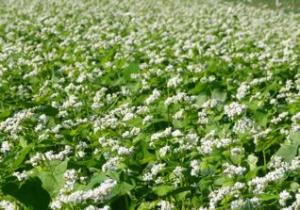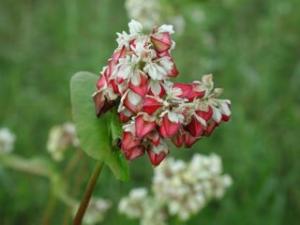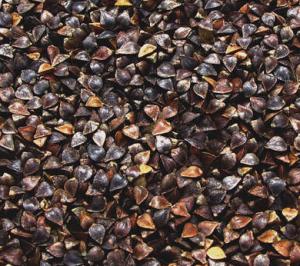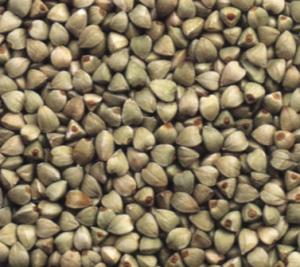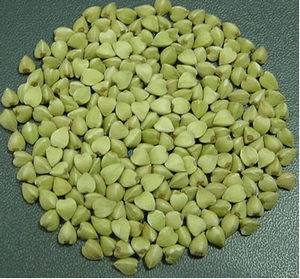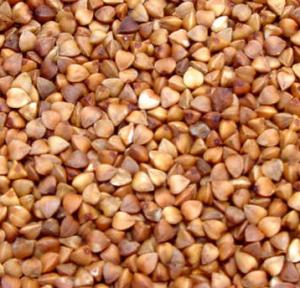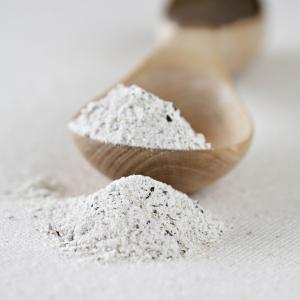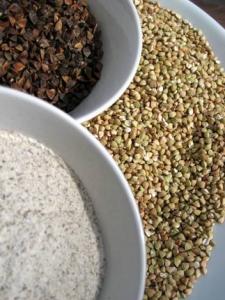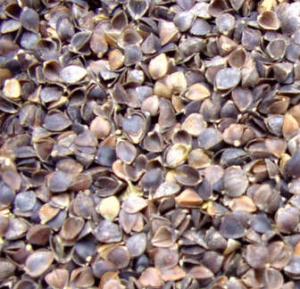No matter where you find it, buckwheat’s very appearance can be surprising. Here are some photos to help you easily recognize buckwheat in all its many forms.
|
Field of Buckwheat Buckwheat growing in a field, showing off its white flowers. |
|
|
Touring a Field of Buckwheat For a sense of perspective, here’s a photo of a group taking a tour of a buckwheat field. It doesn’t grow very tall, and its flowers aren’t very big, but buckwheat more than makes up it with its amazing grains. |
|
|
Red Buckwheat Don’t mistake this for another species of plant, this is in fact buckwheat, its stalk heavy with ripening groats. Buckwheat has a gene that lets it make red or green immature fruit, so although the hulls become darker as they ripen, they can sometimes start off as these brightly colored jewels. |
|
|
Unhulled Buckwheat This is buckwheat after harvesting. The groats are still in their hulls, which have turned a dark brown or almost black color. |
|
|
Green Buckwheat |
|
|
“Naked” Buckwheat Groats Although these buckwheat groats look similar to the green buckwheat pictured above, they are actually the hulled groats of black buckwheat. The pale green color is only visible once the hull has been removed, but before the groats have been roasted. |
|
|
Roasted Buckwheat Groats This might be the most familiar image of buckwheat groats – those that have been roasted. Called kasha, these goats can be cooked as-is, cracked (which produces a texture similar to grits), or ground into flour. |
|
|
Buckwheat Flour Although most often seen as white with small dark brown/black speckles (as shown here), buckwheat flour can also be either uniform soft white or uniform pale tan in color. The difference comes from how coarse or fine the grind is, and whether or not the buckwheat groats were from green buckwheat or the more common black buckwheat. |
|
|
Buckwheat in Three Forms |
|
|
Buckwheat Hulls Ever wonder where all those buckwheat hulls end up? They’re often used as the stuffing in hypo-allergenic pillows, heating pads, and other homeopathic applications. Don’t be fooled by the seemingly pointy corners – buckwheat pillows are supposed to be quite comfortable! |
Photo credits: Field of Buckwheat, Touring a Field of Buckwheat, and Red Buckwheat — courtesy Thomas Björkman and the Northeast Buckwheat Growers Association (NBGA). Unhulled Buckwheat — courtesy Ken Lucas/Visuals Unlimited, Inc. Green Buckwheat, “Naked” Buckwheat Groats, Before Roasting, Roasted Buckwheat Groats, and Buckwheat Hulls — courtesy Tianjin Aidian Imp&Exp Co. Buckwheat Flour — courtesy Anson Mills. Buckwheat in Three Forms — courtesy fastgrowtheweeds.com.

